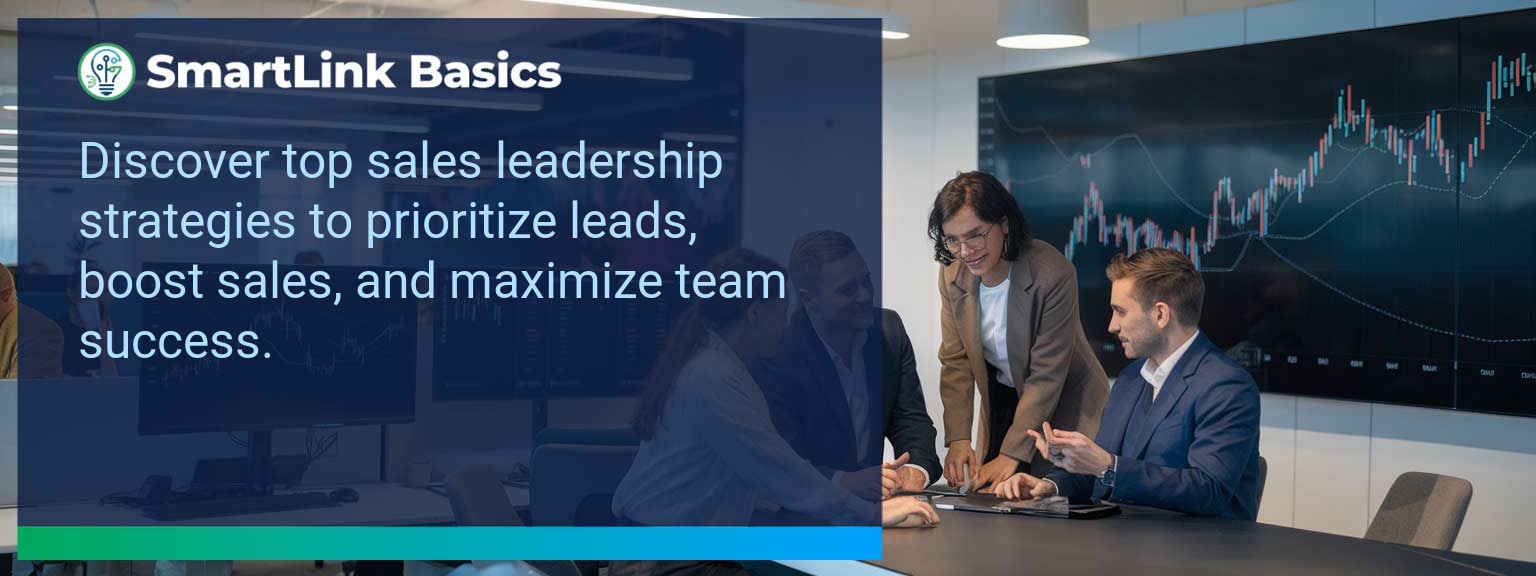High-value leads convert at a significantly higher rate, yet many sales organizations fail to prioritize them effectively. At SmartLink Basics, we help sales leaders develop systems that ensure the best opportunities receive the right focus at the right time. Strong sales leadership strategies directly impact revenue growth by refining targeting, strengthening execution, and maintaining discipline in follow-up. In this guide, you will learn how to identify, engage, and convert top-tier prospects while boosting sales team management efficiency. Expect actionable frameworks that improve sales performance, elevate leadership in sales, and develop consistency in outcomes—without adding unnecessary complexity.
- Define and align the Ideal Customer Profile (ICP) across the sales organization.
- Segment leads based on value potential and buying readiness.
- Optimize messaging and plays for each priority segment.
- Implement a disciplined operating cadence for follow-up and review.
- Track leading, lagging, and quality metrics to guide adjustments.
Understanding the Need for Focused Sales Leadership Strategies
Capturing high-value conversions requires leadership to set unambiguous priorities and direct resources toward the opportunities that matter most. A clearly defined revenue playbook ensures that top accounts receive higher engagement and tailored outreach. Sales leaders must maintain visibility of both immediate opportunities and long-term pipeline health to sustain growth.
When revenue targets are missed, the cause is often a misalignment between targeting and execution. Teams chase too many low-value leads, reducing focus on those most likely to convert. The right leadership process prevents this misallocation.
By refining targeting, accountability, and follow-up, sales leadership can increase win rates while stabilizing revenue predictability.
Common Obstacles In Driving Lead Conversions
Even the most experienced sales leaders encounter roadblocks when moving deals through the pipeline. A frequent challenge is insufficient qualification at the top of the funnel. Without stringent criteria, low-value leads consume the team’s capacity.
Another issue is inconsistent messaging. If the sales team delivers variable or unclear value propositions, decision-makers lose confidence and delay commitment. Pipeline forecast accuracy suffers when there is weak discipline in tracking next steps.
Addressing these gaps requires structured qualification, well-defined plays, and a consistent operating rhythm that reinforces priority focus.
Implementing Proven Sales Leadership Approaches
Applying reliable sales leadership strategies means operationalizing the right habits at all levels of the team. Start by validating the ICP and segmenting leads by potential lifetime value. This ensures coverage and effort align with revenue impact potential.
Design pipeline stages that reflect real buying behaviors and enforce rigorous stage-entry criteria. Train managers to coach to the process, not just outcomes. Use targeted sales coaching to reinforce winning behaviors.
Adopt a set cadence—weekly deal reviews, monthly pipeline audits, and quarterly strategy resets—to maintain momentum.
Measuring The Impact On Conversion Rates
Monitoring results validates the effectiveness of sales leadership choices. The most effective measurement is a balanced set of metrics, covering both activity drivers and final outcomes. Lead-to-opportunity conversion, average sales cycle length, and win rate are common lagging indicators. Pipeline velocity and first-meeting-to-proposal rate serve as leading indicators.
Quality measures, such as adherence to qualification criteria, provide context to the numbers. Tracking these helps leaders understand whether improvements are due to better targeting, stronger execution, or both.
| Category | Metric | Definition | Target |
|---|---|---|---|
| Leading | Pipeline Velocity | Speed at which qualified leads move through stages | +15% in 90 days |
| Lagging | Win Rate | Closed-won deals as % of total opportunities | 30% or higher |
| Quality | Qualification Adherence | Percentage of opportunities meeting all entry criteria | 95% |
Evolving Leadership Practices For Ongoing Success
Sales environments evolve quickly, and leadership must adapt without losing strategic discipline. This involves refining the ICP based on market changes, introducing new sales growth techniques, and upgrading coaching methods to address emerging buyer behaviors.
Leaders who embed flexibility into their operating systems are better positioned to sustain performance improvements. Continuous improvement depends on learning from both wins and losses, integrating feedback into process design, and keeping teams motivated through recognition and clear communication.
Get the 90-day plan, coaching rubric, and dashboard template to operationalize AI in your enablement program.
Lead With Clarity for Consistent Conversion Wins
Prioritizing high-value leads through structured sales leadership processes can significantly increase both efficiency and results. The strategies here equip you to refine targeting, strengthen team execution, and measure progress with precision. For further proven frameworks, Get more Sales Leadership insights from SmartLink Basics.









